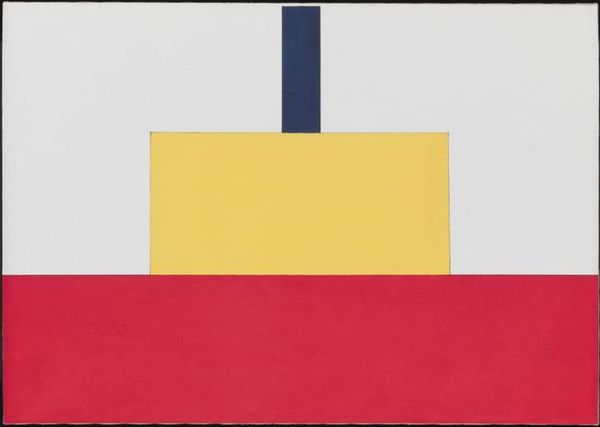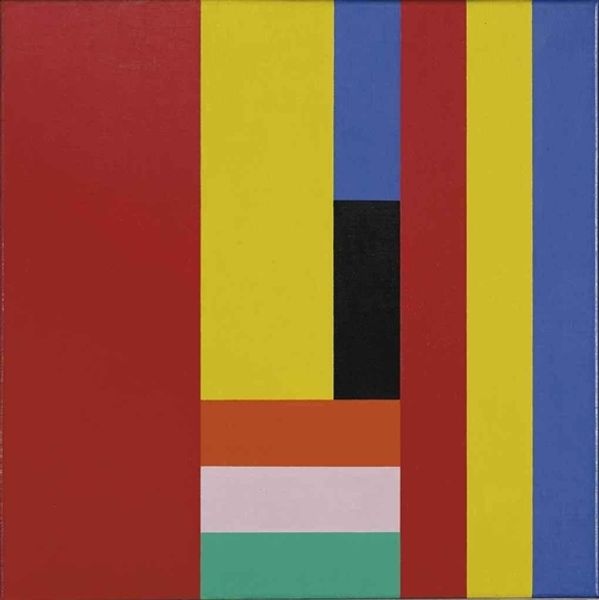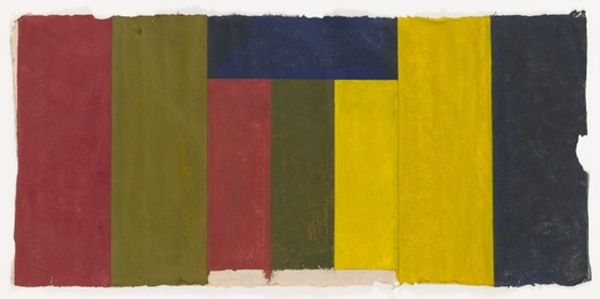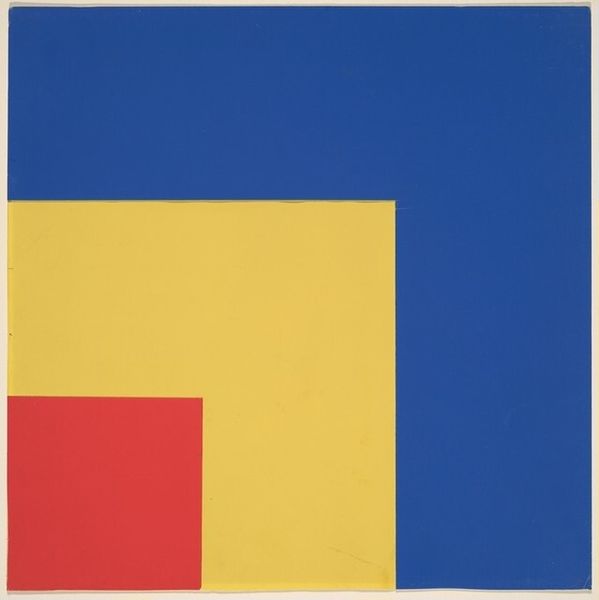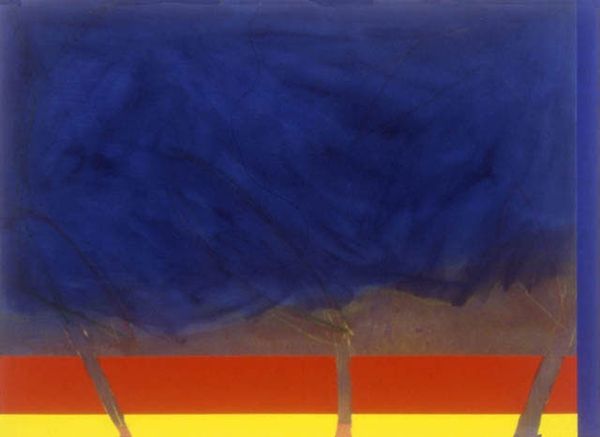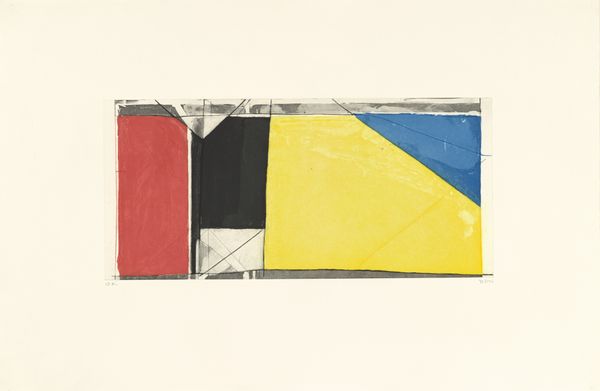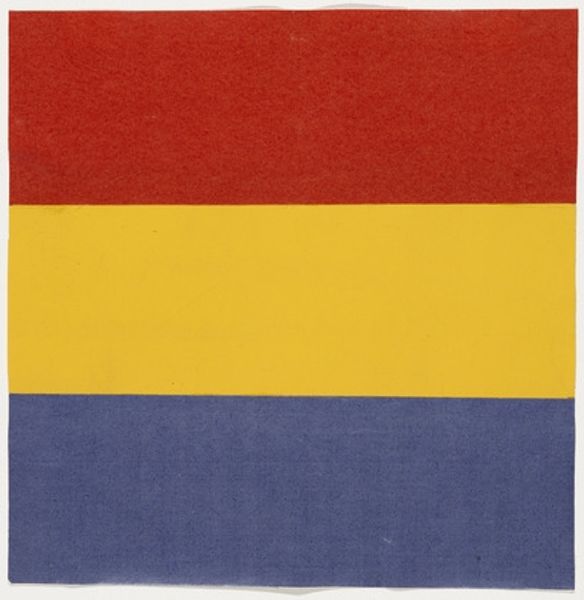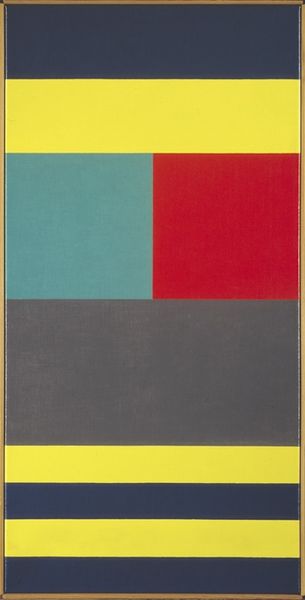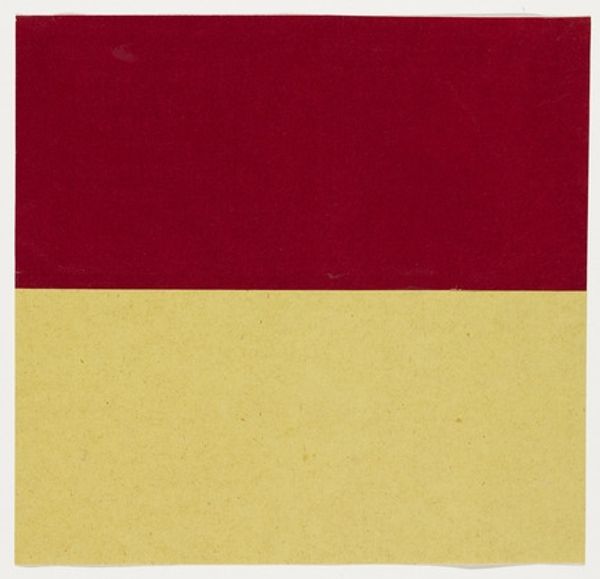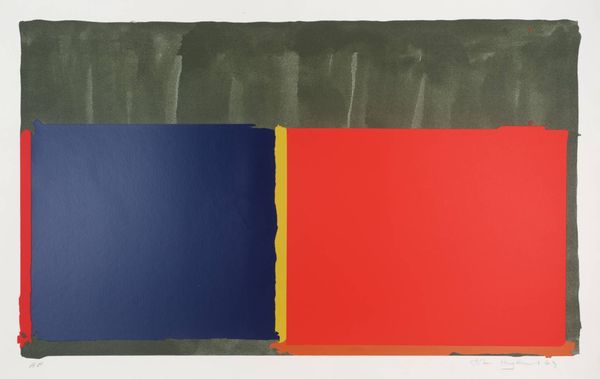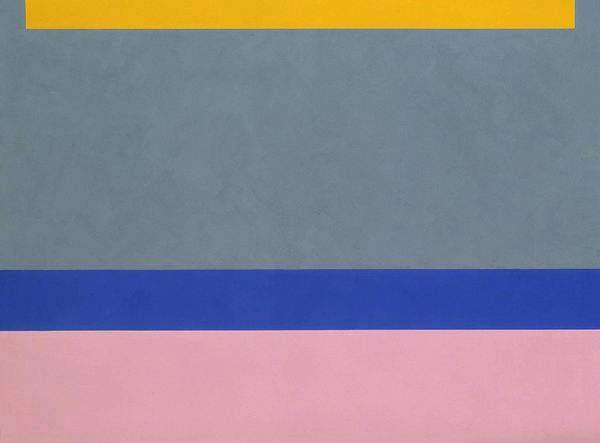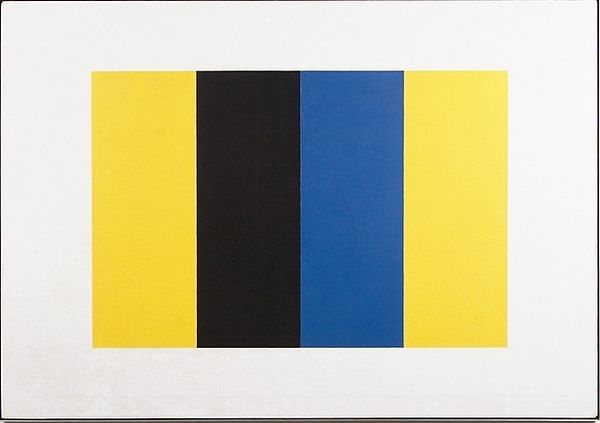
Dimensions: support: 722 x 1026 mm
Copyright: © The estate of Bob Law | CC-BY-NC-ND 4.0 DEED, Photo: Tate
Editor: Here we have Bob Law's "CASTLE CCCXXXIII 15.7.01," currently residing at the Tate. The blocks of color are so striking, it feels almost like a simplified architectural plan. What do you see in this piece? Curator: Consider the means of production, the industrial materials likely used for those blocks of colour. Is this about mass production simplified into basic forms, reflecting post-war consumption and a shift away from traditional art materials? Editor: That's fascinating! It hadn't occurred to me to think about the materials themselves as part of the statement. Curator: Precisely! How do the colours, the very pigment choices, relate to available resources and industrial processes of the time? We are considering the commodification of art itself. Editor: I’m starting to see how the simplicity challenges the idea of art as skilled craftsmanship. Thanks for that insight!
Comments
tate 6 months ago
⋮
http://www.tate.org.uk/art/artworks/law-castle-cccxxxiii-15701-t13317
Join the conversation
Join millions of artists and users on Artera today and experience the ultimate creative platform.
tate 6 months ago
⋮
CASTLE CCCXXXIII 15.7.01 2001 is from a loose series of works, designated by the generic title Castle, which occupied Law during the last decade of his life. The ziggurat compositional format of this work is characteristic of this series; a band of red stretches across the lower third of the painting, centred on top of which is a band of yellow, the same width as the red band, its length being half that of the red band, and on top of this is a thin column of dark blue, again the same width as the other two bands but one fifteenth of the length of the red band. In other paintings and drawings, the colours change (or no colour is used) and the size, relationship and positioning of the bands also change. The artist David Batchelor has observed:
